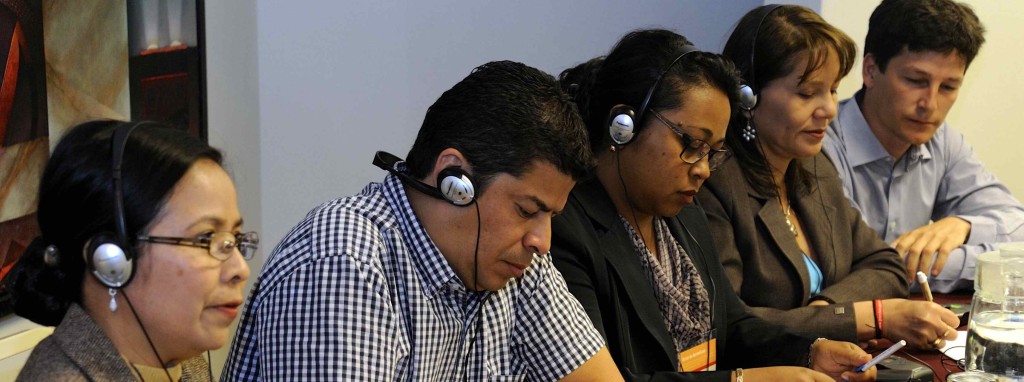We arrived with questions and we head home with many ideas
On behalf of the Lao delegates I would like to sincerely thanks to MIDIS, SUN movement Secretariat, and PROCASUR for conducting, hosting, and giving us the opportunity for taking part in the Learning Route in Peru.
The successful reduction of malnutrition in Peru is significant, this is an inspiration and tells us that multi-sectoral coordination and implementation is very well known.

From left to right, Dr Chandvone. Douglas Romero, El Salvador Secretary of Social Inclusion. Onisoa Josielle Rafidy, Director General, Madagascar Federation of Chamber of Commerce. Minister Paola Bustamante, Peru Ministry of Social Development and Inclusion. Pau Blanquer, SUN Movement Secretariat.
On behalf of the Lao delegates I would like to sincerely thanks to MIDIS, SUN movement Secretariat, and PROCASUR for conducting, hosting, and giving us the opportunity for taking part in the Learning Route in Peru.
The successful reduction of malnutrition in Peru is significant, this is an inspiration and tells us that multi-sectoral coordination and implementation is very well known. As the Laos delegation, we had four questions on arriving:
- How does Peru coordinate with multiple stakeholders?
- How does Peru operationalise its multi-sector plan at all levels from national down to grass roots?
- What does and does not work?
- What lessons learned could be replicated in our home country?
I highly appreciate the fruitful learning route for fighting against chronic child malnutrition. I realize that I received valuable answers, which are the following:
- Multi-sectoral coordination in Peru is very effective – MIDIS is the right ministry for the coordination of all stakeholders – bringing all stakeholders and players together on the will of fighting malnutrition.
- The multi-sectoral plan is operationalised, at central level with clear policies on chronic child malnutrition and focus on the child development and anaemia. They have clear interventions – with clear indicators to guide local authorities. All stakeholders are involved with multi-stakeholders – not just for policy, it is translating the policy into law, to support the implementation
- Peru is implementing at the micro-level, they are articulating it in the local and community level. It is very fantastic example for me – this is the owner ship of the local authority, and the committees themselves, institutionalization even at household level for instance healthy family program, one amongst the most impressive actions I have seen the family have strategic plan, they elaborate their family vision, their compliance with self assessment, their self evaluation, defining plan of action for coping the obstacle for being healthy family and making their children growth healthy and making their own family rule.
- Yet the only ownership is not enough. Strong political commitment is obvious in Peru. The government of Peru allocates funding, which promotes ownership. The funding and allows implementation and focus so regional and local authorities can reach the most vulnerable populations.
What are the lessons learned for Laos:
- The articulation of multi-sectoral coordination is one of the best lessons learned for Laos and focusing and prioritizing of the multi-sectoral plan, the ownership of community and local level and political will and support is essential.
- Secondly, the implementation of budgeting by results is one to be replicated, Laos also has results based performance, but when participating in the LR, I found out how to better formulate the budget for results and the importance of indicators that relate to the funding.
- Thirdly, using ID for new-borns. With this, we can ensure that the current interventions that exist in Laos, which are free of charge health services for pregnant women and children under 5 will be most effective – this intervention in Laos shows the strong political support for mother and child, which is remarkable for improving health of pregnant mothers that caused children malnourished in Laos. The addition of ID for new-borns will further make this initiative efficient.
We come from different countries around the world, we speak different languages and have different cultures, but we are here with the common goal to fight malnutrition. We want to let our children, the future of our nations, to have a bright future. Together, we can fight malnutrition. I hope for the next gathering, we can show our achievements in scaling up nutrition.